The damage done by the former UN Secretary General Ban Ki-moon to the Tamils in North-East Sri Lanka
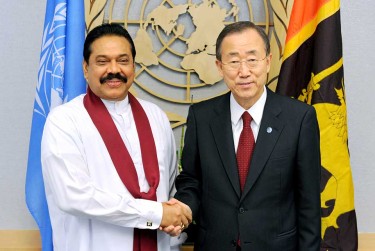
Secretary-General Ban Ki-moon with Mahinda Rajapaksa, former President of Sri Lanka (UN file photo)
There is evidence that the UN staff in Colombo repeatedly contacted Ban Ki-moon and asked him to come to Sri Lanka to prevent what was certainly going to be a bloodbath. Ban said that he would come only of he could do something about it.
Dr. Brian Senewiratne for Global News Centre
(BRISBANE) In the 70 year history of the United Nations, there has not been a Secretary General worse than Ban Ki-moon. The UN Office of Internal Oversight Services said that the UN Secretariat under Ban Ki-moon was “drifting into irrelevance” He has damaged the standing of the UN so much that Richard Gowan, a UN expert at the European Council on Foreign Relations believes that Antonio Guterres, who succeeded Ban Ki-moon on 1 January 2017, “could give the UN the kick up the backside it needs”. Under him, the UN has become a joke, not to be taken seriously, and very different to what the UN was expected to do when it was formed.
For the misfortune of the Sri Lankan Tamils in the North and East, Mahinda Rajapaksa and his murderous brother Gotabaya, took over Sri Lanka in November 2005, and decided to slaughter the Tamils in the North and East. Ban Ki-moon assumed office in January 2007, and took no action despite overwhelming evidence (supplied by his own office, the UN office, in Colombo), that a major massacre of Tamils in the North and East was imminent. Of serious concern was the expulsion of all humanitarian works, including international and UN workers from the conflict zone by the Sri Lankan government so that the slaughter could be done without witnesses. Ban Ki-moon did nothing. It makes him as culpable as the Rajapaksas, even more so, because he was mandated to act to prevent this (see below).
Can Ban Ki-moon be charged? Was he properly informed of the impending slaughter of Tamils? The available information was that he was informed. Did he do what he was obliged to do to prevent a bloodbath? No, he did not. If so, is he liable? It strongly suggests that he is. These are serious questions that must be answered.
The role of the Secretary General
The UN Charter designates the Secretary-General as the Chief Administrative Officer and Head of the UN Secretariat with its 50,000 international civil servants. He has the authority under Article 99 of the Charter to bring to the attention of the Security Council matters that threaten international peace and security. Aside from his formal functions, the Secretary General is expected to uphold the values of the UN and act as its moral authority.
When after receiving the Report of the Panel of Experts whom he appointed (see below), he did nothing saying that there was nothing he could do, it was a lie. Under Article 99 of the UN Charter he had the authority to forward it to the UN Security Council for action. This he did not do.
The UN’s second Secretary General, Doug Hammarskjold defined the role of the job as a diplomat who has the ability and courage to navigate a course independent of the major powers and in defence of the world’s population. Soon after his election in 1953, he said, “The right of the Secretariat to full independence, as laid down in the Charter is an inalienable right”. He went on to define the purpose of the UN – not to submit to the major powers but to seek “solutions which approach the common interest”.
Ban Ki-moon
Ban Ki-moon was an unknown politician from South Korea. The question is how he was appointed as the UN Secretary General. From January 2004 – November 2006, he was Korea’s Minister of Foreign Affairs and Trade. In February 2006, he began to campaign for the office of the UN Secretary General, to replace Kofi Annan at the end of 2006.
Initially he was considered a long shot for the office. However, he had other ideas. For the next eight months using his position as Minister of Foreign Affairs and Trade, he visited every country with a seat in the UN Security Council to ensure votes in his support by signing trade deals and pledging aid to developing countries. No less a paper than The Washington Post claimed that rivals have privately grumbled that the Republic of Korea, which has the 11th largest economy, was wielding economic might to generate support for his candidacy.
One way or the other, this unknown politician from South Korea, received fourteen favourable votes with one abstention (Japan) from the fifteen-members of the Security Council. Later he obtained all fifteen votes. Ban was America’s man from the start. When he was elected in 2005, John Bolton, America’s UN Ambassador, said, “We got exactly what was asked for”.
International comments on Ban Ki-moon
At the end of his term the International Press Syndicate in January 2017 said that Ban Ki-moon leaves a legacy of mediocrity and that his two terms in office he has accomplished precious little in forging peace and making the world a safer and more equitable place.
The Economist in May 2016 called him, “plodding, protocol-conscious and loath to stand up to big powers, and “and among the worst Secretaries General”. In July 2010, The Guardian called his performance “deplorable”. He has been described as the worst UN Secretary General ever, a “plodding nowhere man lacking in charisma, unable or unprepared to make any important decision”.
The most damning indictment came a few days after Ban Ki-moon’s term ended. Joe Lauria, a veteran foreign-affairs journalist based at the UN since 1990, wrote a scathing article, Ban Ki-moon: Requiem for a UN ‘Yes Man’. He opened with, “After ten years of almost total obedience to Washington, Ban Ki-moon stepped down Sunday (1/1/2017) leaving behind a sorry legacy that has undermined the UN’s legitimacy”.
He sets out the international failings of this ‘no hoper’ but fails to mention his disastrous failure to act when crimes against humanity and even genocide were being committed in Sri Lanka. This serious omission will be dealt with here.
Responsibility to Protect (R2P)
R2P are a set of principles drawn up at the World Summit in 2005, adopted by the United Nations General Assembly and reaffirmed (in April 2006) by the UN Security Council.
They are based on the principle that sovereignty is not a privilege but a responsibility. If a State fails to protect its citizens from genocide, war crimes, ethnic cleansing and crimes against humanity, then the international community has to intervene diplomatically, and if this fails, then ‘as a last resort’, with military force. The Sri Lankan State has failed to protect a significant section of its citizens from these crimes, and continues to do so. Therefore, action is mandatory.
Professor Damien Kingsbury is the Director of the Centre for Citizenship, Development and Human Rights, Deakin University, Australia, specialising in political science and security issues. In 2011 he published a well-researched book, Sri Lanka and the Responsibility to Protect: Politics, Ethnicity and Genocide. He made a strong case for the application of R2P in Sri Lanka.
There is no reasonable doubt that with crimes against humanity having occurred and more importantly, are still occurring, the Tamil people in the Tamil North and East are quite definitely in need of protection and as such, R2P has to be applied, which Ban Ki-moon has not done.
The UN office in Sri Lanka (Colombo)
The senior UN official in Sri Lanka is the Resident Coordinator (RC). The Charles Petrie Report states, “For several years (Sri Lankan) authorities had used the control of visas to sanction (UN) staff critical of the State. The Government declared several UN Resident Coordinators persona non grata, or made them understand that their visas were at risk of being withdrawn and rejecting proposed replacements with previous experience in crisis situations”.
What did Ban Ki-moon do about this? Nothing. Here was his staff in a foreign country who kept him informed of what was going on, being harassed and intimidated by the Government of that country, and he choose to do nothing.
Why not? Because it would have upset the Government. But we have just seen that under Article 99 of the Charter it is the role of the Security General to bring to the attention of the Security Council matters that threaten international peace and security, to uphold the values of the UN and act as its moral authority.
Did he have the power to protest? Of course he had.
The Rajapaksa-Ban Ki-moon friendship
Let me set out something which is not well known, if known at all - the relationship between the two which even extended to Ban Ki-moon’s election as UN Secretary General. Gordon Weiss was the spokesman and communications adviser attached to the UN in Colombo during the years that included the end of the war. In his book, The Cage: The fight for Sri Lanka & the last days of the Tamil Tigers, a massive 350-page must-read book he writes, “The Secretary General (Ban Ki-moon) had known the president (Mahinda Rajapaksa) for some years. He felt that he had the kind of personal leverage that would achieve real results, and that diplomatic notification would rein in the more cavalier elements of the Sri Lankan government (the Sri Lankan press enjoyed speculating on the ‘favour’ that President Rajapaksa had purportedly done by supporting his candidacy for the post of Secretary General).Critically, Rajapaksa gave Ban the same reassurances that the Sri Lankans repeated to a series of statespersons who came knocking on the door over the next months, such US Secretary of State Hillary Clinton”.
I am sure Gordon Weiss knows a lot more which he cannot reveal because of the International Civil Service Oath he took when he joined the UN. He had to swear not to divulge information obtained as a result of the office he held, whether or not he continued to work with the organisation. He stated in the Preface of his book, “I have tried to balance the requirements of that oath with the compulsion to tell the story of those unprotected civilians who died during this conflict, and Sri Lanka’s own tragic tale”.
In analysing what Ban Ki-moon did and did not do, it would seem that the “speculations” in the Sri Lankan press referred to above, were correct. From information I have had from other sources which I will not disclose because they were told to me in confidence, it was somewhat more than supporting Ban Ki-moon’s candidacy. There is some evidence that it was not a one-way support.
It is the only way of explaining why Ban Ki-moon allowed President Rajapaksa to get away with what he did, including the outrageous expulsion of UN and other international workers from the conflict area on 12 September 2008 so that a massacre without witnesses could be conducted.
Doug Hammarskjold, the finest UN Secretary General, defined the purpose of the UN – not to submit to the major powers but to seek “solutions which approach the common interest”.
To act in a manner that permitted a murderous regime, the Rajapaksas, to slaughter thousands of its own citizens was certainly not in the ‘common interest’.
A war without witnesses
12 September 2008 is a crucial day in Sri Lanka’s, if not world history. All humanitarian workers, including international and UN workers were removed from the conflict zone. The Government officially informed the UN that it could no longer guarantee the safety of its staff in the Vanni. Was what the Government claimed true? Of course it was not true. The shelling was done by Government Armed Forces and it was the entirely possible to avoid shelling UN and other humanitarian workers.
The Government’s security warning came after many months during which the UN in Colombo perceived the Government to be trying to restrict the access of non-government organisations (NGOs) to the area. Within three weeks, the UN and all international staff were withdrawn, effectively ending UN and international assistance and witnesses from the area.
As the UN prepared to leave, people approached UN staff pleading them not to leave saying, “Some families have come to Killinochchi town due to the presence of international organisations and the belief that this would provide some form of physical security. There is a concern that the moment the humanitarian organisations leave, the Government will begin bombing Killinochchi town and the physical security of the civilian population will be at increased risk. The absence of the UN will result in no one left to bear witness to incidents”.
What did Ban Ki-moon do about this outrageous situation Nothing. Did he not care about a serious loss of civilian life? Presumably he did not or he did not want to upset the plans of his ‘friend’ President Rajapaksa who in 2007 had formally launched his military campaign in the Vanni to take the remaining area under LTTE control whatever the civilian deaths.
All that Ban Ki-moon did was, on 5 February 2009, to speak to President Rajapaksa on the telephone! What he said is not known. What is known is that on the same day a senior UN staff member arrived in Sri Lanka and was horrified with what he found. He said that he was shocked by the information and said “we would be complicit if we do not act on it”. To even suggest that he did not contact the Secretary General, Ban Ki-moon, is absurd.
The final assault
In 2007, the Government formally launched its military campaign in the Vanni. Over the next 18 months, the fighting gradually intensified. As has been mentioned, on 12 September 2008, all humanitarian workers, including UN staff, were removed from the area by the GoSL. The stage was now set for a major military assault and a blood bath.
Throughout the final stages of the conflict, UN member States did not hold a single formal meeting on Sri Lanka, whether at the Security Council, the Human Rights Council or the General Assembly. It was Secretary General Ban Ki-moon’s responsibility to see that these meetings were arranged and to apprise them of the information he had received from the UN office in Colombo. He did not do so. Why?
There is evidence that the UN staff in Colombo repeatedly contacted Ban Ki-moon and asked him to come to Sri Lanka to prevent what was certainly going to be a bloodbath. Ban said that he would come only of he could do something about it.
This is not what he, UN Secretary General, was obliged to do. As has been stated, under Article 99 of the Charter he/she has to bring to the attention of the Security Council matters that threaten international peace and security. He is also expected to uphold the values of the UN and act as its moral authority.
Ban Ki-moon decided to come to Sri Lanka after the massacre of Tamils in the North and East and the Sri Lankan government claiming ‘victory’ on 18 May 2009. On 23 May 2009, Ban flew over the devastated conflict area in Mullaitivu, and said he had never seen anything like this. He then literally dropped into a refugee camp holding some 350,000 Tamil civilians, smiled, was garlanded, smiled again and took off.
Some of those who were in the camp who were later seen by me in Australia (referred to me with major psychological problems) told me that it was the most disturbing event they had gone through. It was worse than being locked up by the Sri Lankan Armed Forces. “We saw the UN Secretary General fly in. We hoped that he will act or at least talk with us. All he did was to smile, get garlanded and fly off. It was devastating, we could not believe it”.
Did he fly back to Colombo and ask President Rajapaksa why 350,000 civilians were treated as prisoners behind barbed wire fences? There is no evidence that he did.
The UN under Ban Ki-moon failed to determine what happened in the closing stages of the armed conflict with respect to a breach of humanitarian and human rights law. This raises serious concerns about the UN operation in Sri Lanka, and its head, Ban Ki-moon.
At the conclusion of Ban Ki-moon’s visit on 23 March 2009, there was a joint Statement issued by Ban Ki-moon and President Rajapaksa. Ban “underlined the importance of an accountability process” and Rajapaksa’s government agreed that it “will take measures to address those grievances”.
Nothing happened for more than a year. Was Ban hoping that the issue will go away? Well, it did not. He had to do something.
On 22 June 2010, he did about the only important thing he has ever done regarding Sri Lanka. He appointed a Panel of Experts (PoE) to advise him regarding the modalities applicable in international standards and comparative experience to the nature and scope of alleged violations of humanitarian and human rights law during the final stages of the armed conflict. We now turn to this.
The Panel of Experts
Three outstanding lawyers were appointed, Marzuki Darusman (Indonesia), Chair; Steven Ratner (USA) and Yasmin Sooka (South Africa).
The Panel commenced its work on 16 September 2010, the Report was delivered to Ban Ki-moon on 31 March 2011.
The findings were a devastating indictment of the Sri Lankan Armed Forces and Government. The Panel stated that credible allegations reveal a very different version of the final stages of the war than that maintained to this day by the Government of Sri Lanka (GoSL). In other words, the Government was lying. The Government says it pursued a “humanitarian rescue operation” with a policy of “zero civilian casualties.” In stark contrast, the Panel found credible allegations, which if proven, indicate that a wide range of serious violations of international humanitarian law and international human rights law was committed both by the GoSL and the LTTE, some of which would amount to war crimes and crimes against humanity. Indeed, the conduct of the war represented a grave assault on the entire regime of international law designed to protect individual dignity during both war and peace.
It is of concern that the Panel of Experts was not allowed into Sri Lanka by the Government. What did Ban Ki-moon do about this unacceptable action? Nothing.
On page 68 of the Report there is a worrying reference to “extermination” which the Report spells out:
“Extermination. Under the ICC Statute, extermination includes “intentional infliction of conditions of life, inter alia the deprivation of access to food and medicine, calculated to bring about the destruction of part of a population” (Art. 7(2)(b)). The part of the population subject to extermination has to be “numerically significant”.
The credible allegations support a finding of the crime against humanity of extermination insofar as the as the conditions imposed on civilians in the final months in the NFZs (No Fire Zone) were calculated to bring about the destruction of a significant part of the civilian population”.
If ‘extermination’ is what is going on, then it is genocide.
What did Ban Ki-moon do with this comprehensive Report? Nothing. When asked about it he said that he had no power to act. That is nonsense. If he had no power to act, the question arises as to why he set up the Panel in the first place. Was he expecting a Report praising the GoSL. The very least he could have done was to submit this to the UN Security Council and ask what can, or should, be done about these extremely grave findings by lawyers of international repute.
Following the submission of the Report on 31 March 2011, on 12 April 2011, the Panel of Experts presented a memorandum stating that some UN agencies and individuals had failed in their mandate to protect people, had under-reported Government violations and suppressed reporting effects of their field staff. The memorandum said that the UN “did not adequately invoke principles of human rights that are the foundation of the UN but appeared to avoid confrontation with the government. The memorandum described the failure to act by Member States as a low mark for the UN.
In response, Ban Ki-moon established an Internal Review Panel on UN activities in Sri Lanka tasked with providing an overview and assessment of UN activities in the final stages of the war and its aftermath, particularly regarding the implementation of the humanitarian and protective mandates, among others.
Internal Review Panel Report on Sri Lanka (Petrie Report)
The Internal Review Panel was tasked with: (i) providing an overview and assessment of UN actions during the final stages of the war in Sri Lanka and its aftermath, particularly regarding the implementation of its humanitarian and protection mandates; (ii) assessing the contribution and effectiveness of the UN system in responding to the escalating fighting and in supporting the Secretary-General’s political engagement; (iii) identifying institutional and structural strengths and weaknesses, and providing recommendations for the UN and its Member States in dealing with similar situations; and (iv) making recommendations on UN policies or guidelines pertaining to protection and humanitarian responsibilities, and on strengthening the system of UN Country Teams (UNCTs) and the capacity of the UN as a whole to respond effectively to similar situations of escalated conflict.
The Panel headed by Charles Petrie, a British diplomat, began work in late April 2012 and submitted a 127-page report to the Secretary-General in early November 2012.
It was a devastating indictment of the UN operations, of the UN SG’s office and the UN staff. If Ban Ki-moon had any integrity, he would have resigned. Instead, he went on to do his second term as Secretary General.
This is not a Report that can be summarised. It must be read in full. All that can be done is to draw attention to some of the more devastating comments.
Section 13.
“The UN’s relationship with the (Sri Lankan) Government was difficult – not least because of a Government stratagem of UN intimidation. The Government declared several RCs persona non grata, or made them understand that their visas were at risk of being withdrawn, while also rejecting proposed replacements with previous experience in crisis situations”.
It is difficult to believe that Ban Ki-moon was not informed about this intimidation by the GoSL. What did he do? Nothing. Here was his own staff in Sri Lanka being intimidated by the Sri Lankan government and he decides not to act. The very least that he could have done was to contact the Sri Lankan President (Mahinda Rajapaksa) and tell him in no uncertain terms that this was totally unacceptable. The fact that he chose not to do makes it highly likely that he was working with Rajapaksa, not with the people (Tamils in the North and East) who were under serious threat and which the UN was there to safeguard.
The UN workers (among others) were thrown out of the North and East by the GoSL. What did Ban Ki-moon do about this serious situation? Nothing.
Section 15
As has been stated, “As the UN prepared to leave, people approached UN staff pleading with them to stay and saying “Some families have come to Killinochchi town due to the presence of international organisations and the belief that this would provide some form of physical security. There is concern that the moment that humanitarian organisations eave, the Government will begin bombing Killinochchi town and that the physical security of the civilian population will be at increased risk…..the absence of the UN would result in no one to bear witness to incidents”.
Here was an advanced and, as it turned out, an accurate assessment of the humanitarian disaster to follow. What did Ban Ki-moon do? Nothing.
It is very likely that President Mahinda Rajapaksa was confident that his ‘friend’ Ban Ki-moon would not act.
On 14 March 2009, the Office of the High Commissioner for Human Rights (OHCHR) stated that actions by the Government and LTTE “may constitute international crimes against humanity, …..the UN almost completely omitted to explicitly mention Government responsibility for violations of international law”.
UN officials said that they did not want to prejudice humanitarian access by criticizing the Government. It is an outrageous stance for a human rights body to adopt.
As the situation in the Wanni deteriorated, some Member States in the Security Council complained that they were receiving almost no information from the Secretariat on the international human rights and humanitarian law situation in the Wanni, and senior officials in the Executive Office of the Secretary General were expressing the same concerns. Ban Ki-moon, as the head of Executive office must take full responsibility for this.
Section 31
By 18 May 2009, most of the remaining LTTE leadership was reportedly killed. The Government claimed that they died in armed combat (which was certainly not true), possibly at the hands of other LTTE fighters (ie that the LTTE were killing their own leaders!). Other credible sources said many were executed, including some who on the morning of 18 May 2009 had crossed into Government-held territory unarmed and with white flags.
To execute those who were unarmed and carrying white flags (of surrender) is a war crime which was done by the Sri Lankan Government Armed Forces.
Section 33
“Throughout the final stages of the conflict, the Member States did not hold a single formal meeting on Sri Lanka, whether at the Security Council, the Human Rights Council or the General Assembly.”
UN Secretary General Ban Ki-moon had free access to all of them. That he chose not to hold a single meeting of any of them, in particular the Security Council speaks volumes for his support of the murderous Rajapaksa regime. It makes him as culpable as the Rajapaksas.
Section 35
Immediately after the end of the war, from 22nd and 23rd May 2009, the UN Secretary General (Ban Ki-moon) travelled to Sri Lanka. Ban Ki-moon has a lot of explaining to do as to why he waited for the end of the slaughter before he went to Sri Lanka.
As has been stated earlier, Ban Ki-moon flew over the devastated Mullaitivu area, said that he had never seen anything like this, dropped into a refugee camp (literally) with several thousand refugees, smiled, was garlanded, smiled again, and took off. That was it.
We now turn to the absurd situation of Sri Lanka applauding itself at the Human Rights Council.
Section 36
“Meanwhile, on 19 May (2009), the same day the war was declared over, at the Human Rights Council a total of 17 Member States supported a ‘Special Session’ which was scheduled for May 26 and 27. The GoSL did not want a ‘Special Session’ but once it was scheduled quickly submitted its own draft resolution. The ‘Special Session’ ultimately adopted the Sri Lankan Government version which commended the Government for its support to IDPs (Internally Displaced People), welcomed Government commitment to human rights, and urged the international community to cooperate with the Government. The Resolution did not mention accountability.
Section 38
On 14 September Ban Ki-moon sent a letter to President Rajapaksa that he was “considering the appointment of a Commission of Experts” to advise him on further and to be available to him for assistance on accountability. Rajapaksa ignored the letter.
By May 2010, several NGO reports had been published on violations of human rights, including a report by the International Crisis Group, that called for an international accountability mechanism. As is usually the case, on 6 May 2010, the GoSL established a domestic mechanism, the “Lessons Learnt and Reconciliation Commission” (LLRC).
Section 41
The conflict and its aftermath saw UN staff suffer abuse in contravention of their UN privileges and immunity, and of international human rights and humanitarian law. What did Mr Moon do? Nothing.
Section 44
“The UN never presented the full circumstances of the relocation to Member States or the general public and the Government did not face any significant criticism for is act.
The reaction of the UN system as a whole to the Government’s withdrawal of security assurances represented a serious failure”.
The Report now deals with the crucial figure of the number of IDPs.
Section 46
A Wanni local government official testified to the LLRC that during the final stages there had been 360,000 IDPs in her district alone. Others quoting local government authorities placed the population in October 2008 at 429,000. Yet the Sri Lankan Government insisted that there were no more than about 70,000 people. The UN believed that there were up to 300,000 civilians.
The Governments denial of the real numbers was to use these falsely low figures against increasing humanitarian convoys and later to rebut reports high civilian casualties. From September 2008 to May 2009, UN food assistance dropped for a estimated 20% of recipients to almost zero.
Doctors in the Wanni reported people dying in their thousands from the effects of malnutrition and lack of antibiotics.
Section 47
“…. the UN did not confront the Government directly with the fact that obstructing assistance was counter to its responsibilities under international law”.
Section 77
“The tone, content and objectives of the UN engagement with Member States regarding Sri Lanka were heavily influenced by what it perceived Member States what it wanted to hear, rather than what Member States needed to know…… the (UN) Security Council was deeply ambivalent about ever placing on its agenda a situation that was not already the subject of a UN peacekeeping or political mandate; while at the same time no other UN Member State mechanism has the prerogative to provide the political response needed, leaving Sri Lanka in a vacuum of inaction”.
Section 88
“Coming at the beginning of his second term, the Secretary General’s (Ban Ki-moon) decision to commission an internal review is a courageous step”.
That might well be so but a number of highly critical comments were aimed at Ban Ki-moon. If he had any integrity, he should have resigned. Instead he went on to do the same thing in the next 4-year term.
Charging Ban Ki-moon
There might well be a case to charge Ban Ki-moon now that he has lost his UN immunity as of 1st January 2017 using the Yamashita principle. There is no evidence that the Japanese General Yamashita killed anyone in the Philippines in WW2. However he had the power to stop those under him from doing so (which he failed to do). He was tried, convicted and executed. His appeal to the United States was rejected.
Ban Ki-moon has already been charged by the people of Haiti for his responsibility in introducing troops from Nepal without adequate checking that they were carrying cholera (from Nepal) which resulted in the an epidemic of cholera in Haiti.
The Haiti cholera epidemic
Haiti, a Caribbean island, has not had a cholera epidemic in recorded history.
On 21 October 2010, the Haiti Laboratory confirmed that cases of diarrhoea in hospitals in the Artibonite region (where the major Artibonite river runs) had been cholera.
A person becomes infected by ingesting contaminated food or water. It is fatal in up to 50% of victims who are not adequately rehydrated.
Here is what one of the experts said:
“Suddenly, the first cases appeared in the central highlands near a camp for United Nations peacekeeping forces…The disease struck with explosive force. Within two days of the first cases, a hospital 60 miles away was admitting a new cholera patient every 4 minutes”.
On 28 October 2010, a week after the first cases were confirmed, the Head of Haiti’s health department said that 4,147 people had been treated for cholera.
By 10 November 2010, Haiti’s senior health official said that the outbreak was “no longer a simple emergency, it is now a matter of national security”.
The US Centre for Disease Control (CDC) using DNA analysis, confirmed that the organism was one found in the Asian region.
The Haitian government asked Professor Renaud Piarroux, an epidemiologist from Marseille, to investigate the outbreak.
He showed that it followed the arrival of UN peacekeepers from Nepal where the disease had been flourishing. They were sent without the UN properly checking them out to see whether they were infected/carrying the infection.
Of serious concern was that the UN-commissioned a Haiti contractor had emptied the UN peacekeepers latrines, teeming with the cholera organism Vibrio Cholera, into a tributary of the Artibonite river. UN peacekeepers, in an effort to hide evidence, removed the pipes connecting the UN camp latrines into the stream below.
Ban Ki-moon refused to accept any responsibility and claimed that the UN peacekeepers had nothing to do with the outbreak despite overwhelming evidence to the contrary.
6 years later, in August 2016, following a report from the UN Special Rapporteur, Philip Alston, Ban Ki-moon finally accepted responsibility for the UN role. He apologised for the first time to the people of Haiti for the UN’s role in the cholera outbreak in the UN General Assembly:
“On behalf of the United Nations, I want to say very clearly we apologise to the Haitian people. We simply did not do enough with regards to the cholera outbreak and its spread in Haiti … We are profoundly sorry for our role”. .
Between October 2010 and October 2014, there were 711,442 cases of cholera of whom 400,103 were hospitalised and 8,646 had died.
Legal action followed. The Boston-based Institute for Justice and Democracy in Haiti and a sister group in Haiti filed action on behalf of 5,000 cholera victims.
They want the U.N. to end cholera by installing a national water and sanitation system; pay reparations to cholera victims and their families; and publicly apologize for bringing cholera to Haiti.
The plaintiffs contended that the U.N. forfeited its legal immunity when it failed to launch an internal process to adjudicate the plaintiffs’ claims, as they say its own commitments require.
Ban has claimed immunity from prosecution under a diplomatic treaty. That was upheld in a federal court in Manhattan, in response to a class-action lawsuit by cholera victims. The Court held that in the USA, the UN had immunity from prosecution.
As for compensation, Ban Ki-moon said that he (ie the UN) cannot find the money and all he could do was to find $200 million. That is nonsense. The necessary money will have to be found.
The Sri Lankan situation
The number of Tamil civilians who lost their lives was many times more than the number of lives lost in Haiti. Moreover, the time period was far longer in Sri Lanka.
Ban Ki-moon had visited Sri Lanka and would most certainly have seen the military weapons in the possession of the Government. Yet, he did nothing.
There seems to be no reason why legal action should not be launched against him by those who suffered terrible trauma.
Compensation will have to be paid to those who suffered and their families.
Brian Senewiratne
Brisbane, Australia 22/4/17


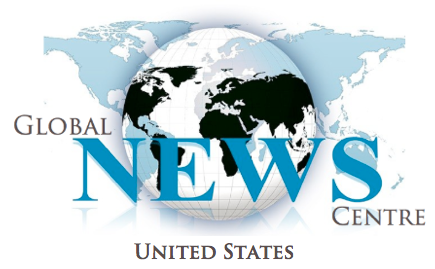
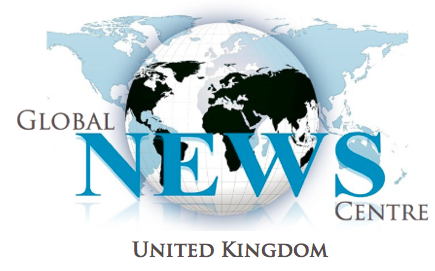
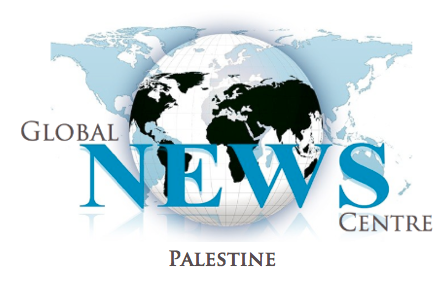


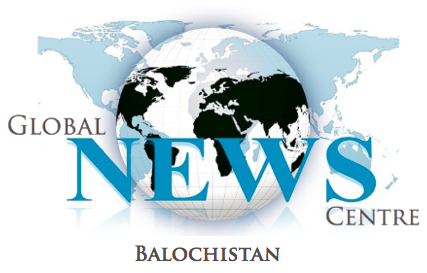


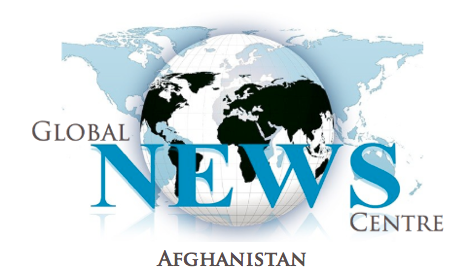

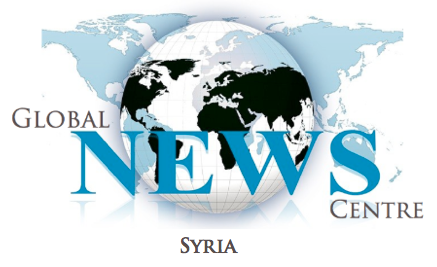
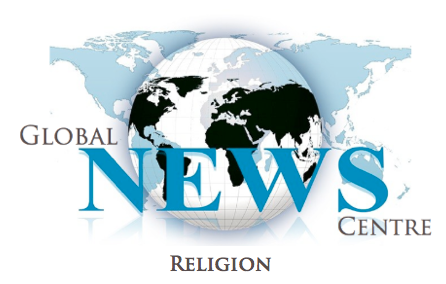


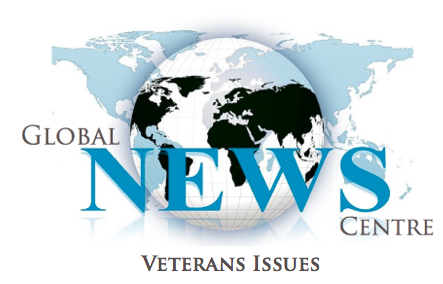

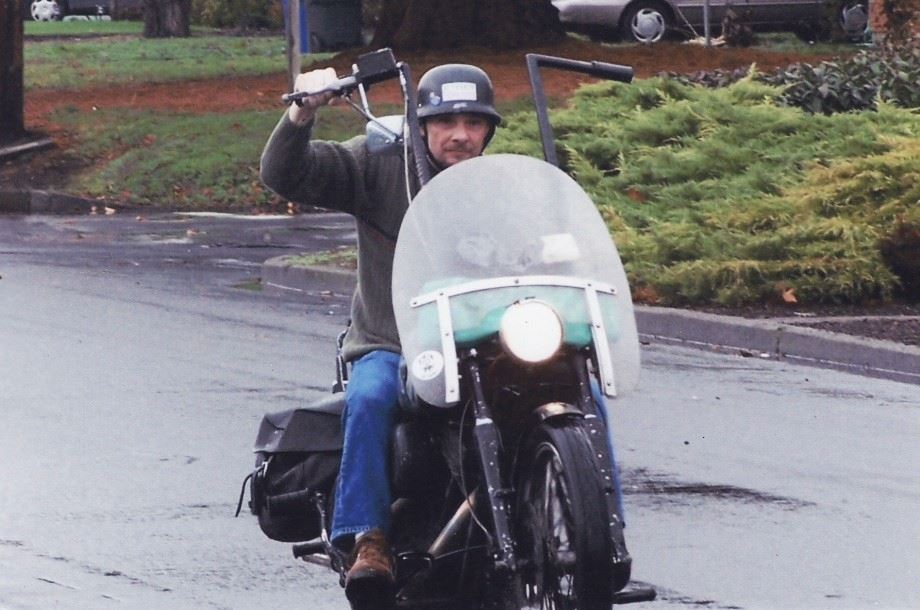
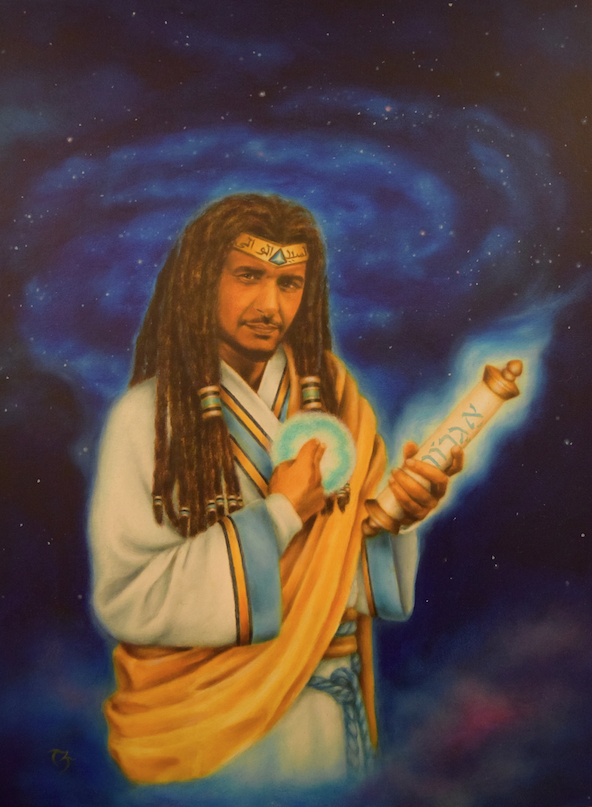



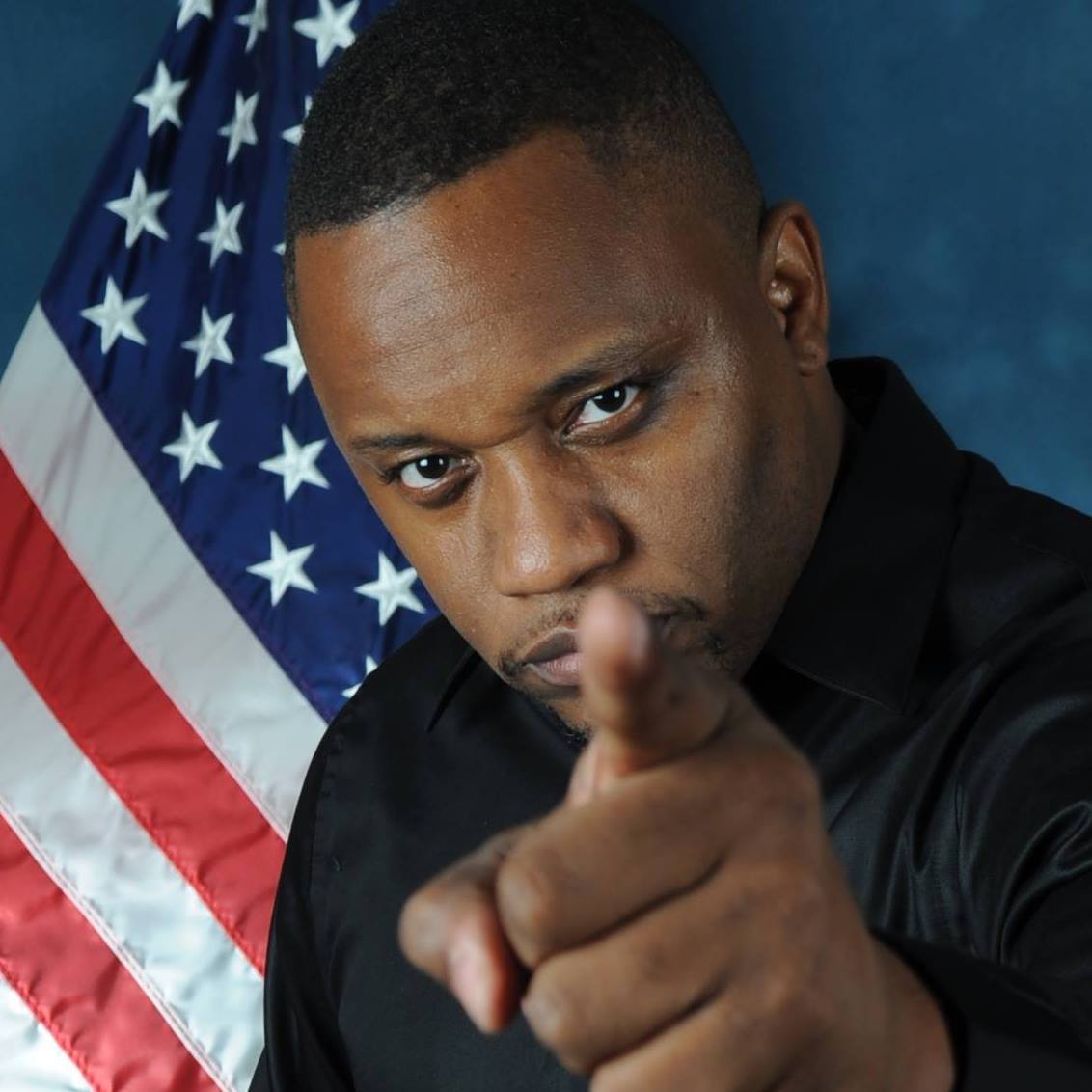
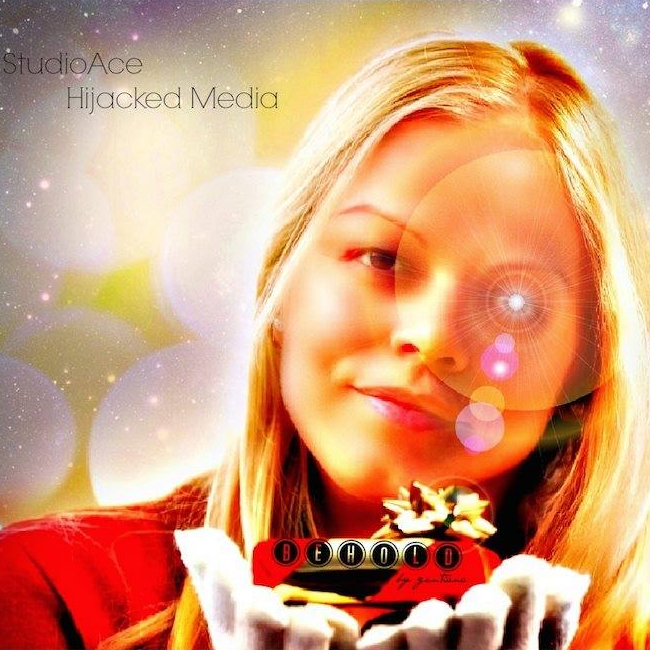

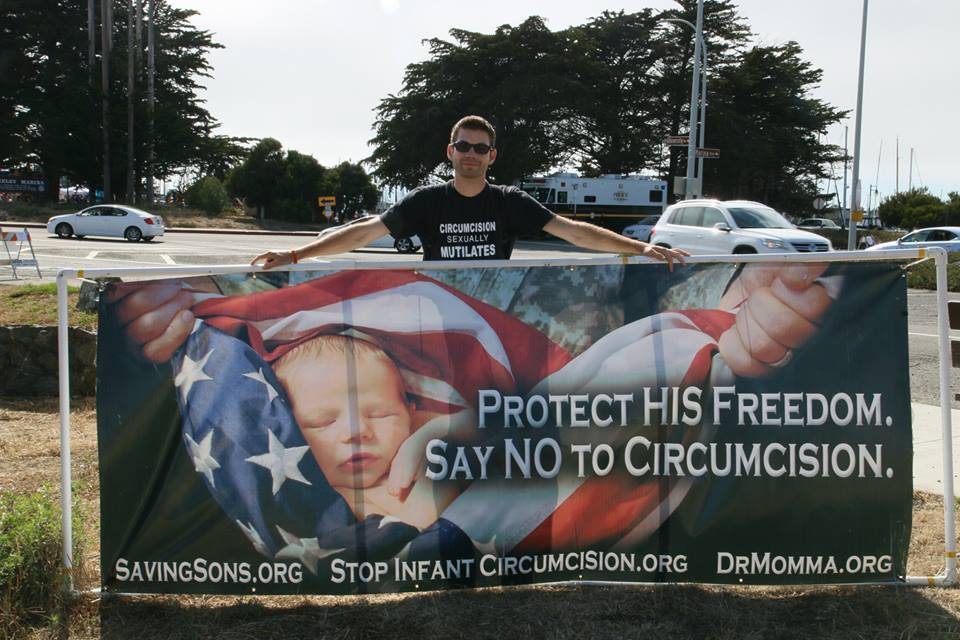








Leave a Reply
You must be logged in to post a comment.